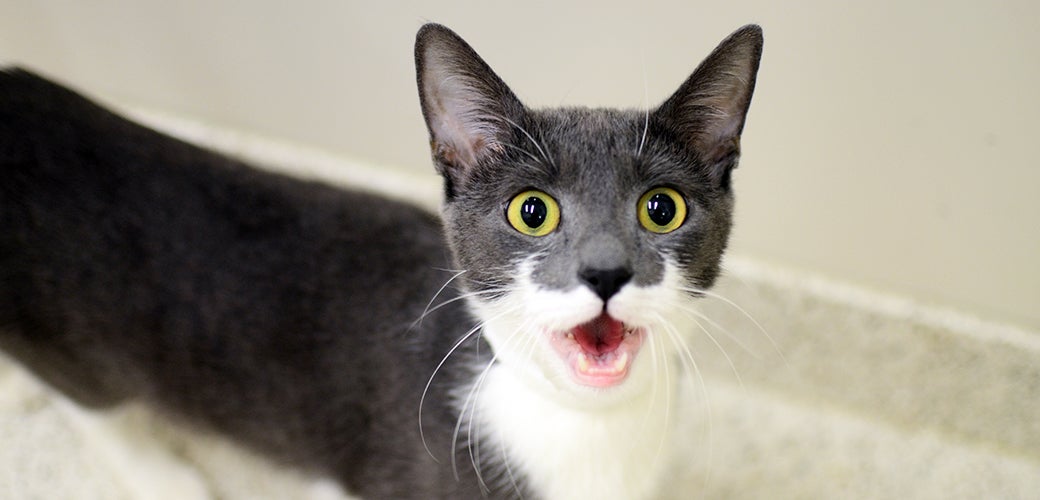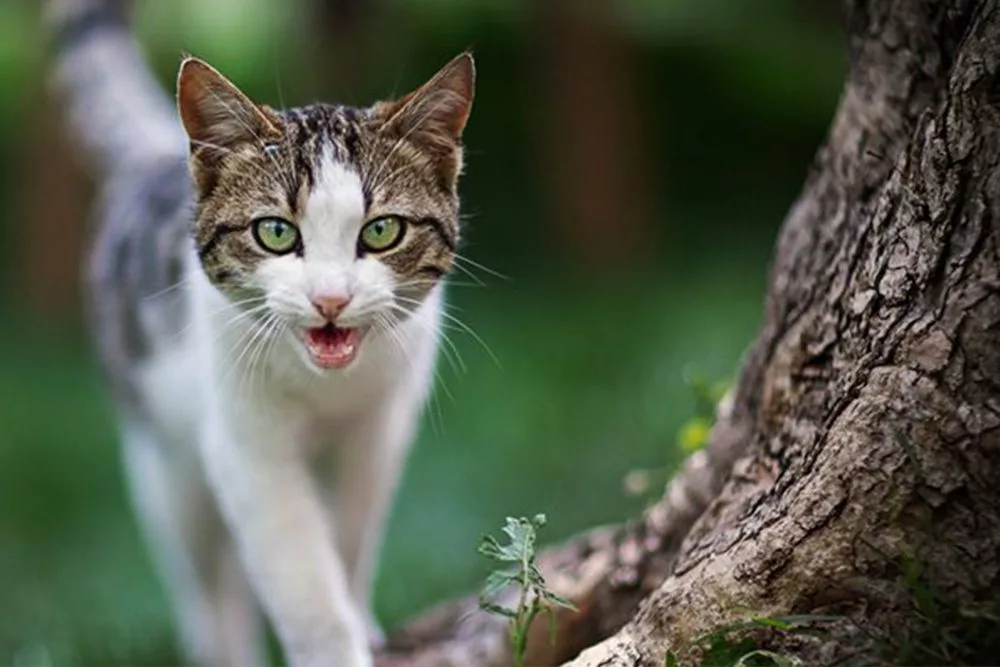One cat meows at another cat to communicate or establish dominance in their territory. Meowing is a form of feline language used for communication.
Cat owners often wonder why their furry companions engage in meowing at other cats. Meowing, a vocalization unique to felines, serves various purposes. Cats use meowing as a means of communication, conveying a range of messages to other cats. Among these messages is the attempt to establish dominance or territorial boundaries.
Cat meowing can indicate that one cat is asserting superiority over the other or signaling their presence in a particular area. Understanding the reasons behind a cat’s meowing can provide insights into their behavior and help cat owners create a harmonious environment for their feline friends.
Understanding Cat Communication
Cats meow at another cat to communicate various needs, such as establishing dominance or seeking attention. Understanding cat communication can help decipher the reasons behind their vocalizations.
Understanding Cat Communication Cats are highly vocal animals and use meowing as a primary form of communication. Vocalization plays a crucial role in cat behavior. By meowing, they convey various messages and emotions to other cats and humans alike. Understanding the different types of meows and their meanings can help cat owners better interpret their feline companions. Cats meow for various reasons such as expressing hunger, seeking attention, or indicating discomfort. A short and high-pitched meow often indicates a friendly greeting or a request for something specific, while a long and drawn-out meow may signify frustration or annoyance. Additionally, cats can make repetitive and urgent meows when they are in pain or distress. It’s important to pay attention to the contextbody language cues alongside the meowing to better understand what your cat is trying to communicate. Observe their ear and tail positionseye contactfacial expressions to get a complete picture of their message. By recognizing and responding to your cat’s vocalizations, you can strengthen your bond with them and provide them with the care and attentionReasons For Cats Meowing At Each Other
There are several reasons why cats meow at each other, one of which is to establish dominance or territory. This is especially common when cats are not familiar with each other or when there is a new addition to the household. Cats meow to assert their dominance and mark their territory, ensuring the other cat knows their place.
Cats also meow at each other to express social hierarchy. Through vocalization, cats communicate who is in charge and maintain a pecking order within the group. Meowing can be a way for cats to indicate their position and maintain social harmony.
Another reason for cats meowing at each other is to seek attention or interaction. Cats are social creatures and often meow to initiate play or seek companionship. They use vocalization as a means to engage with other cats and foster social bonds.
In some cases, cats meow at each other to indicate discomfort or distress. This can happen when one cat is invading another’s personal space or causing discomfort. Meowing serves as a medium for the distressed cat to communicate their discomfort and try to resolve the situation.
Lastly, cats may meow at each other to signal playfulness or excitement. Just like humans, cats can get excited and want to engage in playful activities. They may use meowing as a way to express their enthusiasm and invite the other cat to join in.
Behavioral Considerations
When one cat meows at another cat, it is important to understand the behavioral considerations that may be at play. Cats use a combination of body language and non-verbal cues during their meowing to communicate with both humans and other animals. They may meow as a way of expressing their needs, seeking attention, or even as a form of socialization.
Additionally, environmental factors and changes in behavior can contribute to the frequency and intensity of meowing between cats. Changes in the household, such as the introduction of a new cat or a change in routine, can trigger increased vocalization. Age-related factors also play a role, as younger cats may vocalize more frequently as they explore their surroundings and older cats may meow due to cognitive decline or health issues.
Overall, understanding the reasons behind why a cat meows at another cat requires careful observation of their behavior, consideration of their environment, and recognition of any age-related factors that may be influencing their vocalization.

Credit: www.aspca.org
Dealing With Meowing Between Cats
It’s common for cats to meow at each other, especially when a new cat is introduced into a multi-cat household.
To help prevent excessive meowing and maintain a peaceful environment, it’s important to follow a few key strategies. One is to provide each cat with adequate resources, including food, water, litter boxes, and perches. Ensuring that each cat has their own space and territory can help reduce tension and potential conflict.
Another important step is to establish a harmonious environment by gradually introducing the new cat to the existing cats. This can be done by using scent swapping and gradual supervised interactions.
Additionally, there are techniques available to manage excessive meowing, such as providing distractions, using calming pheromone diffusers, and seeking advice from a veterinarian or animal behaviorist. By following these guidelines, you can help create a peaceful coexistence between your cats, resulting in fewer instances of meowing at each other.
Addressing Potential Health Concerns
Excessive meowing between cats can be a sign of underlying health issues, and it’s important to address potential medical concerns. If your cat is consistently meowing at another cat, it is advisable to seek veterinary advice. A professional can help identify any potential medical conditions that may be causing the increased vocalization.
There are several common health conditions associated with excessive meowing in cats. These can include urinary tract infections, kidney disease, hyperthyroidism, and dental problems. Meowing is often a way for cats to communicate their discomfort or pain, so it’s crucial to rule out any medical issues that might be causing the behavior.
If your cat is regularly meowing at another cat, it’s essential to consider possible medical causes before assuming it’s purely behavioral. Consulting with a veterinarian will help you determine the best course of action to ensure your cat’s overall health and well-being.
Training And Behavioral Modification
Training and behavioral modification can be effective in addressing excessive meowing between cats. Positive reinforcement techniques should be used to discourage this behavior. Rewarding cats with treats or praise when they are quiet and not engaging in excessive meowing can help reinforce desired behavior. Distracting and redirecting cats’ attention can also be useful in minimizing meowing directed towards another cat. Providing interactive toys or engaging in play sessions with the cat can redirect their focus. It is important to understand the limitations of behavioral modification. Cats may continue to meow at each other, especially in situations where there is competition for resources or territory. In such cases, owners should provide separate resources and safe spaces for each cat.
Conclusion
Understanding why your cat meows at another cat is essential for maintaining a harmonious feline environment. By recognizing the reasons behind their vocalizations, such as establishing dominance, expressing territory, or seeking attention, you can work towards resolving any potential conflicts.
Providing multiple resources, such as separate feeding areas or perches, can help reduce tension among your furry companions. Remember, a calm and peaceful environment is key to keeping your cats content and happy.


